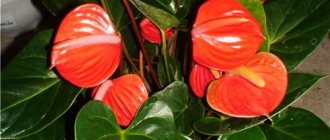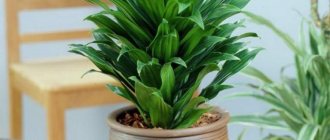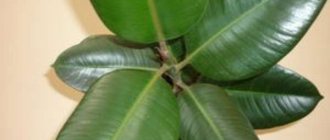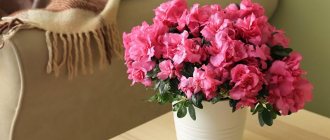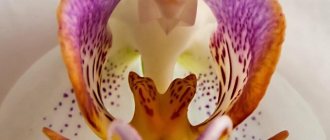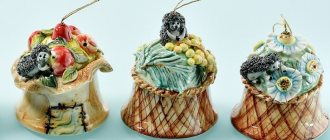Ficus is the most famous and popular plant for home and office.
But, if you think about it, what do we even know about this flower other than its standard biological description? Dear readers!
For you, we have created communities on social networks in which useful articles and interesting ideas are published several times a day! Subscribe and receive useful content in a convenient format! This time we decided to find out whether it makes sense to have a ficus at home. We’ll also talk about the signs and superstitions that surround this plant.
History of a flower
Ficus has been known as a house plant for a long time. The inhabitants of Ancient China placed this plant in their homes.
This flower came to Europe already in modern times.
At first it was a plant of the nobility. It was considered one of the symbols of prosperity, because it was brought from the other side of the globe! And it was very expensive.
Aristocrats placed pots with the plant in the bedrooms (to restore lost sexuality), in the living room (to attract luck in cards), in the study (to make things go better).
Gradually, ficus began to appear in the homes of ordinary people and became what we know it today. A symbol of all indoor flowers, a welcome and frequent guest in offices, living rooms and other public spaces.
Buy or receive as a gift?
Signs and superstitions for the home about the rubber ficus say that it is best to buy the flower, at least for a symbolic “penny”. This is due to the ability of a house plant to accumulate energy, both positive and negative, later emitting it into space. Therefore, a ficus taken “just like that” may not be “charged” with the most positive energy. Money given for a flower is considered a ransom and resets the plant’s aura.
If the flower is given by close friends or relatives with whom the warmest relationships have developed, there is no need for a ransom. Such a plant, given from the heart and with the most sincere wishes for good, will bring happiness to the house.
A ficus received unexpectedly as a gift or bought on a momentary impulse is a harbinger of good news.
What signs and superstitions are there?
Each plant variety has its own superstitions and signs. Let's consider those that correspond to the most popular types of flower: Elastica (rubber) and Benjamin.
Signs about the rubber-bearing ficus
To summarize, the general meaning: Elastica attracts money. Therefore, it would be a good idea to place this flower in your office or study.
This is a rather interesting moment. Among some peoples, Elastica is considered a muzhegon. Although there is no consensus, since in other cultures Elastica is considered a symbol of success and happiness.
ON A NOTE. Some people place Elastica near their workplace in order to keep relationships with colleagues exclusively on the work plane.
Signs about Ficus Benjamin
This variety has very real and tangible beneficial properties. The fact is that the leaves of the flower release phytoncides into the atmosphere, which purify the air and disinfect it.
It is believed that Benjamin's ficus attracts well-being to its owner and strengthens his relationships with family.
Eschynanthus
If you really understand what muzhigon flowers look like, then this plant cannot be ignored. It is magnificent (see photo below). And, what’s important, it’s easy to care for. Aeschynanthus has thick, fleshy leaves and beautiful flowers. Many plants accused of interfering with a person's privacy have similar characteristics. Most likely, they are suspected in vain. Botanists believe that it's all about the poisonous juice. It burns the fingers of its unwary owner. So he suspects the plant of all sorts of nonsense. No matter how you think about it, Aeschynanthus stands in the ranks of muzhegons. It is not recommended to grow it at home. Better admire it in the office.
Legends about ficus
Over the many years of growing the flower at home, many legends associated with it have developed.
The Chinese believe that ficus should be in every home. Therefore, they have a tradition of giving a pot of these plants at a wedding or housewarming. Ficus for the Chinese is a symbol of family.
There is a similar attitude towards the flower in Egypt. It is quite difficult to maintain such a plant among the sands, but Egyptians still try to buy it for their home.
In Thailand, the plant is even sacred. According to local beliefs, ficus is able to drive away evil spirits from the home.
But in the West they are more wary of the flower. For example, a plant is considered dangerous when its leaves become spotted.
Also, the flower does not like being constantly surrounded by a large number of people, especially strangers.
How to care for ficus Elastica at home
Caring for Ficus rubber is not particularly difficult. Minimal knowledge in plant growing and a little effort will allow even a novice indoor flower lover to grow this unpretentious plant.
What to do after purchase
Immediately after purchasing Ficus Elastic, you need to quarantine it for 2 weeks. The plant is set aside from other house flowers, carefully examined for diseases and pests and, if necessary, treated with special preparations. If there are traces of disease on the plant, it is treated with fungicides according to the instructions, for example, Fitosporin. If harmful insects are detected, the tree is sprayed with an insecticide according to the instructions.
There is no point in replanting a newly purchased plant. It is necessary to give him a couple of months to adapt, since he does not tolerate changes in place and conditions of detention.
Lighting
Direct sunlight can leave unsightly burns on ficus leaves, however, this plant is quite light-loving and prefers to receive a lot of diffused light. Variegated varieties especially need good lighting; under no circumstances should they be pushed into a corner or placed in the shade, otherwise the leaf blades will lose their characteristic color over time.
The southern, eastern or western side of the house is ideal for placing Ficus Rubber. The plant is placed on the windowsill and shaded with a curtain or placed near the window on the floor, table or stand, depending on the size of the tree. If you place the pot in the shade, the flower will not die, but will stop growing and shed its lower leaves. Then the tree will not look as chic as in brighter lighting.
Temperature
For growing, a normal room temperature of about +20-+250C or higher is suitable, but at higher humidity levels. In spring and summer, a pot of ficus can be taken out to the veranda, balcony or garden. In the cold season, it is advisable to keep the flower in cooler conditions, but make sure that the thermometer does not fall below +150C, otherwise the tree will quickly shed its leaves. You also need to protect the plant from drafts and sudden changes in temperature, and if it is on a cold windowsill, then foam plastic should be placed under the pot.
Humidity
When the humidity level is low, the tips of the ficus leaves begin to dry out. In the warm season, they try to spray it every day with a spray bottle and periodically clean the leaves from dust. It is also recommended to wash the plant once a month under a warm shower, but at the same time you need to cover the surface of the soil with a film. In winter, spraying is stopped, but the flower is removed away from working batteries. It is important to keep your ficus leaves clean at any time of the year. It is wiped with a damp cloth or dust cloth. You cannot treat the leaves of the plant with special polishing compounds, since a clean and healthy Ficus Elastica will always look attractive, and when such products are used, it begins to shed its leaves.
Watering
Watering is adjusted depending on the size of the plant itself and external conditions. It is advisable to water as the top layer of the contents of the pot dries to a depth of 2 cm.
In summer
In the warm season, spring and summer, the ficus is watered 1-2 times a week, when the top layer of soil dries out. Watering should be plentiful, but do not allow moisture to stagnate. All water that has flowed into the pan is immediately drained.
in winter
In the cold season, watering is done moderately once a week. Excessive moisture of the substrate when kept cool threatens rotting of the roots.
Fertilizer and feeding
In order for Ficus Elastica to grow well and develop harmoniously, from the beginning of spring to the end of summer it is fed with mineral compounds and organic matter 2 times a month. Drugs can be alternated. All fertilizers are applied at the root and in no case are sprayed on leaves, growing points and stems. In the cold season, all feeding is stopped. Nitrogen preparations will help accelerate the growth of ficus and the appearance of new leaves in the spring.
Pruning and crown formation
Over the years, ficus leaves fall off at the bottom of the trunk, so periodic pruning and trimming is very important to maintain the decorative appearance of the plant. This will help not only give the tree splendor, but also restrain its rapid growth. Often, domestic ficuses grow with one trunk, but in order for it to begin to branch, it is useless to pinch and trim its top, for this you need to cut off at least 5-6 internodes, then the lower buds can awaken, from which new branches will grow.
If the Ficus Elastica has become too elongated, you can cut off the unevenly developed branches and root them in the same pot. Then the bush will grow more lush and dense. To limit the growth of ficus in height, you can periodically pinch the upper parts of the branches.
Young ficus trees can be made more magnificent by bending the upper part of the stem. It is bent to the maximum and secured. After the topmost bud gives off a side shoot, the plant is straightened.
To increase branching, some gardeners practice piercing the stem with a thin needle to a depth of 1/3 of the trunk. Punctures begin to be left from the top of the trunk, gradually moving down.
Pruning is recommended in spring, March or April. To do this, use a sharp, clean knife, and remove the milky juice with water. When working with Ficus elastica, you need to be careful, protect your hands with gloves and try to prevent the plant juice from getting into your eyes and mucous membranes. After the procedure, wash your hands with soap and plenty of water.
Is it a flower?
The sign that ficus is a muzhegon appeared during the First World War. Someone noticed that many widows had this flower growing in their homes.
People connected these two facts, and they began to hastily get rid of ficus trees. But by the middle of the 20th century, these plants again became one of the most popular in home floriculture.
But among the Slavic peoples, the fame of muzhegon is firmly attached to the ficus.
Ficus elastica - popular species with names and photos
Some varieties of Ficus elastica have become very popular in culture. These are species with single-color leaves and Ficus elastica variegata, decorated with spots and streaks of various colors. Based on these species, several varieties that were especially popular in indoor floriculture were born, capable of decorating any room in the house.
Robusta
One of the most common types. It is a tall tree with wide glossy leaves of dark green or dark olive color. The leaf blade of adult ficus can reach a length of 30 cm, and the plant itself can reach a height of 2 m.
Tineke
Tall variety with large variegated leaves. It grows up to 2 m in height. The leaves of adult plants are up to 30 cm. The leaf blades are wide, green with a thick pinkish or white vein in the center and a white border. The variety lends itself well to pruning and can take on a lush, spreading form.
Abidjan
A powerful tree 1.5 m tall with a lush crown and almost matte wide leaf blades. The leaves reach 25 cm in length, while young leaves are almost red, and adult leaves are dark green, with yellow veins and a reddish back side.
Burgundy
The leaves of this variety are dark green, almost black, with a burgundy tint and a matte sheen, pink petioles and bright red caps. The leaf blades are elongated, about 30 cm long and about 10 cm wide.
Decor
The leaves are wide, glossy, very large, up to 30 cm long. The edges and tips of the leaf blades are curved down. The central vein of the leaf is reddish at the base, then smoothly turns into cream and soft green. The leaf color is bright green above and lighter below.
Sylvie
The leaves are wide, oval, covered with strokes and spots of creamy yellow color. The edge of the sheet also has a light edging. The leaf petioles are green with a pink tint.
Belize
The leaf blades are large, wide, about 25 cm long and 15 cm wide. As a rule, young plants are more variegated and varied in color. On one leaf blade there may be pale yellow, gray-green and dark green spots with a pinkish tint. The reverse side of the leaf is pale pink. The central vein and leaf petioles are red-pink.
Melanie
A low-growing variety with a height of no more than 30-50 cm. The leaves are dark, with a reddish tint, glossy, about 15 cm long.
Chloe
Plants of this variety grow up to 1.5 in height. The leaves are glossy, rich green. The shape of the leaves is oval, with a pointed tip. The length of the leaf plates is about 30 cm and the width is up to 20 cm.
Sofia
This species is very rare in indoor floriculture, but it looks quite unusual compared to the others. Its leaves are dark green, with an olive tint and a glossy surface. The leaf blades are wider, almost round and large, about 25-30 cm in length. The plant forms a powerful trunk. The leaves are arranged tightly to each other, forming a beautiful rosette.
Brazil
The color of the leaves is the same as that of the Belize variety. The variegated leaves with a pinkish tint do not exceed 20 cm in length, while they are more densely spaced, and the tree itself looks compact.
Black Prince
Forms a tall spreading tree with very dark glossy leaves 15-25 cm long. The color of the leaves becomes almost black at the end of the day.
Magical properties of the flower
The following properties are attributed to the plant:
- Strengthens relationships even in the largest family.
- Helps to overcome difficulties and solve any problems.
- Calms and makes a person more reasonable.
- Attracts success and luck into the home.
- Helps you gain financial stability.
- Protects the home and its inhabitants from the evil eye and the influence of dark forces.
- If you suddenly decide to buy yourself this flower, then luck will soon turn your face.
But these are all positive properties. Some peoples believe that ficus has a number of negative traits.
For example, in Russia it is still believed that this flower is muzhegon. It has a bad effect on a man's character.
It is also believed that this plant nurtures envy, slander, and a craving for scandals and showdowns in a person.
What does a plant mean in Feng Shui?
Ficus requires respectful treatment. According to Feng Shui, it should be placed in a visible place. Preferably in the south-eastern part of the house or apartment.
Then the flower will bring more benefits to its owner.
If you have several rooms, then place the ficus in the one where you welcome guests. Here he will create a friendly atmosphere of friendly conversation.
IMPORTANT! In this case, first of all, you need to pay attention to the fact that the ficus likes its place. These plants do not tolerate drafts. They like warmth, bright but diffused sunlight.
Scindaptus
This plant is similar in appearance to the previous one. The same thick “varnished” leaves with sharp tips. Curly branches coming from one root. It's a kind of vine. It is believed that this southern plant also secretes poison. It is not recommended to handle it with bare hands. By analyzing what muzhegon flowers look like, we can already draw certain conclusions about their characteristic features. These plants look like vines and have thick, smooth leaves. Therefore, there is no need to remember complex names. The characteristics are enough to make you wary of the next candidate for living in your apartment. Take a closer look at the leaves.
Money signs about ficus trees
There are several signs associated with money and flowers.
- To grow financial well-being, you need to place a flower in your office.
- Talk to the flower and ask it for help so that it will attract you more money.
- Don't let the leaves fall. This promises monetary losses.
- It is better to plant ficus in a green pot.
How to plant ficus correctly to attract wealth
Do you want to attract more money? When replanting a ficus, place a few coins at the bottom of the pot or flowerpot. Each new branch on the plant will mean a chance for you to improve your financial condition.
Reproduction
In indoor conditions, propagation of Ficus elastica is not particularly difficult. There are several ways to obtain this wonderful plant; all that remains is to choose only the most effective and most suitable.
Cuttings
The tops or parts of the stem 10-15 cm long are suitable for this. The cuttings are cut at an angle and only 1-2 upper leaves are left, washed from the milky juice under the tap with warm water. Cuttings can be rooted in a glass of water or directly in the substrate, only in the latter case it is advisable to cover the seedlings with a glass jar or bag on top. As a rule, cuttings of green-leaved varieties take root better, and it is better to first treat variegated varieties with root or any other root formation stimulant.
Leaf
This method of obtaining a new plant is very controversial. In most cases, the leaves take root well and take root, but, as a rule, they remain in this form for a long time. To do this, you need to separate the ficus leaf along with the leaf petiole and root it in the substrate. It will take root and take root, but new stems most likely will not appear in a month or a year.
Air layering
This method is better suited for propagating variegated varieties. A cut is made on the trunk with a depth of no more than 1/3 of the thickness, wrapped in moss and polyethylene, secured with thread or soft wire. After well-developed roots appear under the film, the cuttings are cut below the fastening and rooted in the substrate.
What signs about pregnancy are there?
This plant is believed to have a beneficial effect on the human reproductive system. Therefore, a family wishing to have a child is recommended to take a ficus.
But you can’t just buy a flower in a store. There are several signs:
- A plant cutting should be taken from a family with children;
- The flower must be provided with proper care. Communicate with him;
- No one else should touch the plant.
ON A NOTE. A flower given by a close friend will also have positive properties.
Where is the best place to place ficus trees to attract good luck?
The influence of the flower on a person depends on where the pot with the plant is located.
- Study. The plant increases productivity and helps improve relationships with colleagues.
- Corridor. The flower will become a guardian who will not allow evil forces to enter your doorstep.
- Living room. People will come to visit you more often. Moreover, these will not be annoying visitors, but welcome friends.
- Cabinet or shelf. Home energy protection.
- Bedroom. Resolving sexual problems of a married couple, strengthening marriage.
REFERENCE. A good idea would be to place a pot with a plant in the kitchen. There is a belief that the inhabitants of the house will always be well-fed and will not need money.
Where can't you put a flower?
Despite all its positive energy, ficus can be capricious. So the flower does not like to be in the center of the room. Because of this, there will be quarrels and scandals in the family.
The bathroom and toilet are also not the best places. Your money will flow away like water.
Ficus also does not like to be close to other flowers. This plant loves space and comfort.
ON A NOTE. The southwest and northeast corners of an apartment or house should be avoided. For ficus, these are energetically unfavorable zones.


